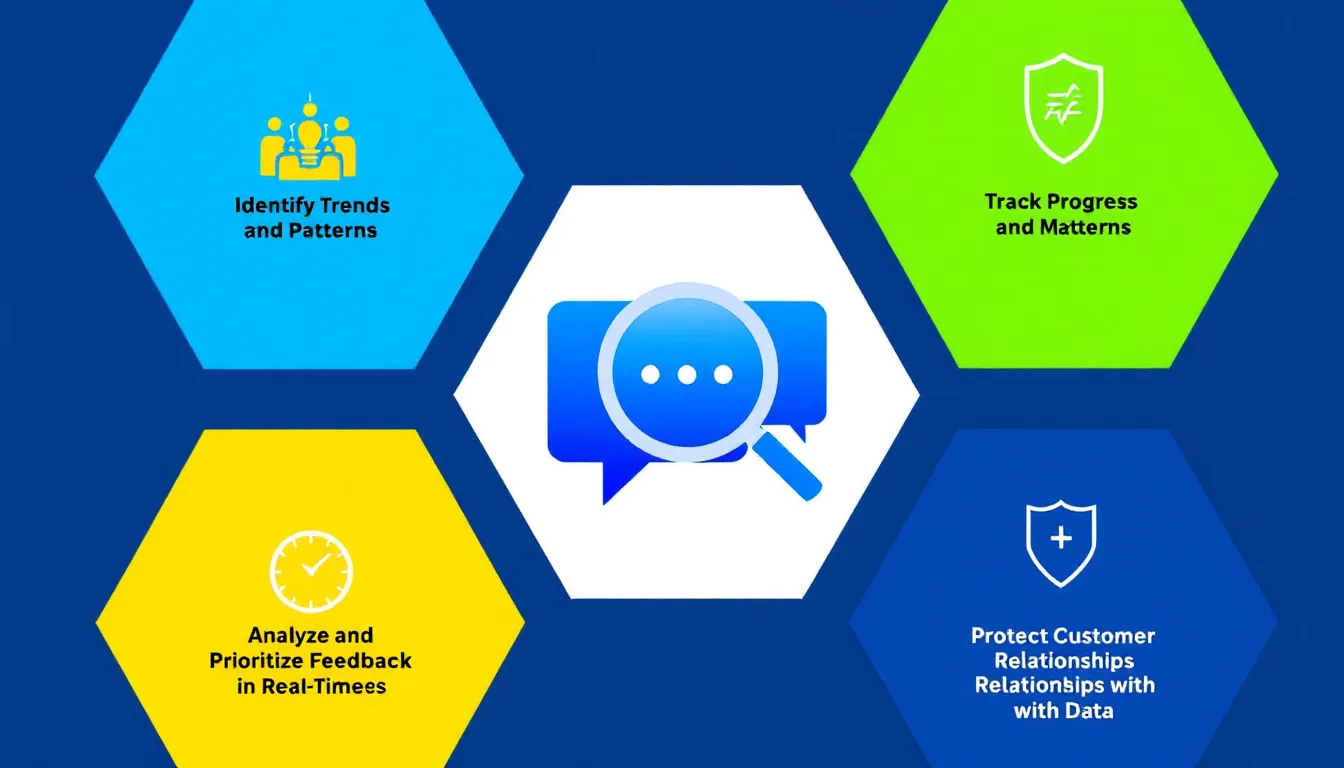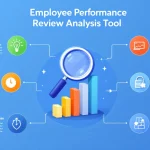Customer Feedback Analysis
Is this tool helpful?
How to Use the Customer Feedback Analyzer Effectively
Follow these steps to get actionable insights from your customer feedback using the tool:
-
Input Customer Feedback Entries: Enter the customer feedback you want to analyze into the first field. Separate each feedback with a line break. Examples:
- “The mobile app crashes frequently after the latest update.”
- “I love how easy it is to customize my dashboard.”
-
Provide Product Context: Describe your product and its current performance in the second field. Include details about recent changes or feature introductions. Examples:
- “Our fitness tracking app recently added social sharing features, leading to a 10% increase in daily active users.”
- “The online banking platform updated its security protocols last quarter, but some users reported login issues.”
-
Add Key Business Goals (Optional): Share your strategic objectives to align the analysis with your priorities. Examples:
- “Improve user engagement by increasing session duration by 15% within six months.”
- “Reduce customer churn rate by 10% through enhanced product features.”
-
Specify Analysis Focus Areas (Optional): Highlight particular aspects you want the analysis to prioritize. Examples:
- “Subscription pricing, feature usability, customer onboarding”
- “App performance, notification settings, customer support response time”
- Submit for Analysis: Click the “Analyze Feedback” button to process your inputs and generate detailed insights.
- Review Analysis Results: After processing, review the summarized patterns, themes, and recommendations in the results section.
- Copy and Share Insights: Use the copy functionality to share the analysis report easily with your team or stakeholders for informed decision-making.
What is the Customer Feedback Analyzer and Why Use It
The Customer Feedback Analyzer is a specialized tool designed to help product managers, customer experience leaders, and business owners extract meaningful insights from vast volumes of customer feedback quickly and effectively. By applying advanced natural language processing and machine learning techniques, it categorizes, summarizes, and prioritizes customer input, allowing you to focus on improvements that directly impact satisfaction and business results.
Purpose of the Tool
This tool streamlines your feedback analysis by:
- Identifying key trends and sentiment patterns in customer comments
- Uncovering critical issues and opportunities often missed in manual reviews
- Aligning product changes with your strategic business goals
- Enabling faster, data-driven decision-making
- Tracking shifts in customer satisfaction over time
Benefits of Using the Customer Feedback Analyzer
Time Savings and Efficiency
The tool automates the labor-intensive process of sifting through thousands of feedback entries. This allows your team to spend more time acting on insights rather than interpreting data, speeding up product iterations and strategic planning.
Data-Driven Insights for Better Decision Making
By providing structured, objective analysis rather than subjective opinions, the tool empowers you to make informed decisions based on customer sentiment, usage trends, and feedback priorities.
Comprehensive Thematic Analysis
It categorizes feedback into meaningful themes such as usability, feature requests, pricing concerns, or support quality. You gain a clear picture of what matters most to your users.
Alignment with Your Business Objectives
Incorporating your business goals into the analysis ensures that product improvements support your broader strategy, maximizing their impact and return on investment.
Trend Detection Over Time
Analyze feedback from various time periods to spot emerging trends and shifting customer needs, so you can proactively adjust your roadmap.
Enhanced Customer Satisfaction
By detecting and addressing critical pain points early, you improve the overall customer experience and foster loyalty and positive brand reputation.
Practical Applications and Use Cases
The Customer Feedback Analyzer fits a wide range of industries and scenarios. Here are some practical ways to apply it:
1. SaaS Product Development
A SaaS company collects user feedback about new features and interface updates. The analyzer identifies the most frequent feature requests and usability issues, helping prioritize the roadmap for maximum customer satisfaction and retention.
2. E-Commerce Customer Experience Improvement
An online retailer reviews product reviews and service tickets to understand bottlenecks in the purchase process. The tool highlights recurring complaints about checkout usability, prompting targeted fixes that reduce cart abandonment.
3. Hospitality Service Enhancements
A hotel chain analyzes guest feedback across multiple properties to uncover consistent service gaps, like slow Wi-Fi or room maintenance issues, guiding investments that boost guest satisfaction and repeat bookings.
4. Mobile App Performance Monitoring
A mobile app team uses the analyzer to sift through crash reports and usability feedback, pinpointing high-impact bugs and performance issues that require urgent attention to prevent user churn.
5. Restaurant Menu Optimization
A restaurant chain gathers customer opinions on menu items. The tool identifies dissatisfaction with dessert choices and suggests the addition of healthier options, driving higher customer satisfaction and increased sales.
Frequently Asked Questions
Q1: How many feedback entries can the tool handle simultaneously?
The tool efficiently processes hundreds to thousands of feedback entries, depending on their length and complexity, ensuring thorough analysis without sacrificing speed.
Q2: Can it analyze feedback in multiple languages?
Yes, the tool supports multilingual inputs, enabling global businesses to analyze customer feedback across regions and languages.
Q3: How long does the analysis take?
Processing time varies with feedback volume, but most analyses complete within minutes to an hour for large datasets.
Q4: Can I integrate the analyzer with existing customer feedback platforms?
Currently, it operates as a standalone tool. Integration with popular CRM and feedback systems is planned for future updates.
Q5: How often should I analyze customer feedback?
Analyze feedback based on your business rhythm and feedback volume. Many companies run weekly or monthly reports, increasing frequency during product launches or updates.
Q6: Does it differentiate between types of feedback, like bugs versus feature requests?
Yes, it categorizes feedback into distinct types such as bug reports, feature requests, usability concerns, and more, helping you prioritize effectively.
Q7: How does it prioritize feedback?
The tool ranks feedback by frequency, potential impact on customer satisfaction, alignment with your business goals, and the feasibility of addressing the issues.
Q8: Can I customize the analysis for my product or industry?
Yes, by providing detailed product context and focus areas, you ensure the analysis reflects your specific industry and business needs.
Q9: How does the tool handle conflicting customer opinions?
It highlights conflicting feedback by presenting opposing views along with their prevalence, giving you a balanced understanding of customer sentiment.
Important Disclaimer
The calculations, results, and content provided by our tools are not guaranteed to be accurate, complete, or reliable. Users are responsible for verifying and interpreting the results. Our content and tools may contain errors, biases, or inconsistencies. Do not enter personal data, sensitive information, or personally identifiable information in our web forms or tools. Such data entry violates our terms of service and may result in unauthorized disclosure to third parties. We reserve the right to save inputs and outputs from our tools for the purposes of error debugging, bias identification, and performance improvement. External companies providing AI models used in our tools may also save and process data in accordance with their own policies. By using our tools, you consent to this data collection and processing. We reserve the right to limit the usage of our tools based on current usability factors.







